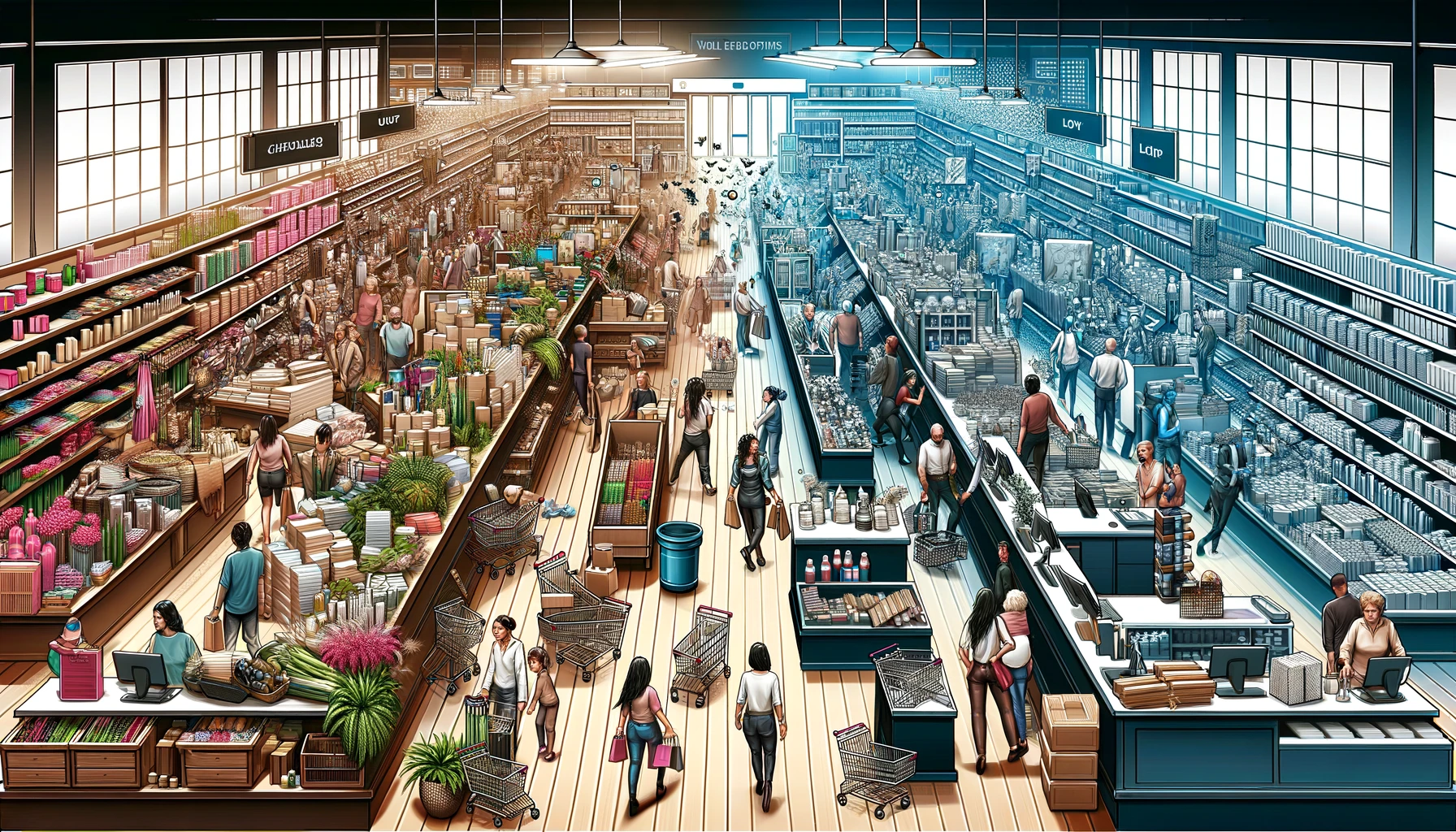5 Retail Merchandising Mistakes to Avoid at All Costs
Great retail merchandising not only boosts sales but also builds a loyal customer base. The following mistakes, however, can jeopardize these goals, turning potential success stories into cautionary tales.

Ever walked right into a store to walk right back out? Maybe it was the crowd, or the messy shelves, or god forbid the smell. As hard as a retail brand’s team works to optimize their marketing, sales team tactics, product recommendation engines, and everything else – it can all be undone by a bad in-store experience.
That’s why effective merchandising practices are not just a part of the business; they are the heart and soul that drive in-store sales and create an environment where customers feel valued and happy. Research has shown that even a small change in product displays can lead to a 80% to 478% increase in sales, demonstrating the undeniable link between how products are displayed, priced, and promoted, and the overall success of the retail business. In an era where every customer interaction can influence your brand's reputation, investing in smart merchandising isn't just wise—it's essential.
Moreover, the impact of merchandising extends beyond immediate sales. According to Adcock Solutions, 82% of purchase decisions are made in-store, significantly influenced by the retail environment, including the store layout, signage, and the checkout experience. This highlights the importance of a strategic approach to merchandising, not only to boost sales but also to build a loyal customer base that feels engaged and understood. The following mistakes, however, can jeopardize these goals, turning potential success stories into cautionary tales.
1. Not Optimizing the Store Layout
One of the most critical yet frequently overlooked aspects of retail merchandising is the store layout. An intuitive, easily navigable layout is paramount to ensuring a positive shopping experience. When customers struggle to find products or navigate through cramped and chaotic spaces, their frustration levels can soar, significantly diminishing the likelihood of a purchase. In fact, over 67% of shoppers left stores empty handed because they couldn’t find the product they were looking for. Retailers must prioritize flow in their store design, creating clear paths to high-demand products and ensuring that the journey through various sections is logical and seamless.
Besides delivering the basic shopping experience of allowing shoppers to actually find the right products, an optimized layout facilitates better exposure for featured products and promotions. Strategic placement near the entrance or along main walkways can capture customer interest right from the start, encouraging exploration and, ultimately, purchases. Failure to leverage such strategies can result in missed opportunities and a store environment that fails to maximize its sales potential. This is why one of the top tools we suggested for merchandisers is dedicated to planogram management.
2. Long Checkout Lines
Few things deter shoppers more effectively than long checkout lines. 80% of shoppers who have abandoned a store without a purchase said it was due to waiting in line, and it has cost retail businesses billions in lost sales. They are not just a minor inconvenience; they represent a significant barrier to completing a purchase. Long wait times at checkout can tarnish the overall shopping experience, leading to customer dissatisfaction and even causing potential sales to be abandoned. Retailers must invest in efficient checkout solutions, whether through additional staff during peak hours, self-service kiosks, or mobile point-of-sale systems to keep lines moving smoothly.
Implementing technology solutions can also help in managing peak times more effectively, by providing real-time data on checkout line lengths, allowing store managers to make quick staffing adjustments. This proactive approach not only improves customer satisfaction but also enhances the efficiency of store operations, ultimately contributing to a better bottom line.
3. Not Leveraging Sales Data to Understand Why Customers Buy
In the age of information, ignoring sales data is akin to navigating a ship without a compass. It offers invaluable insights into customer preferences, buying patterns, and product performance that merchandisers need to get the highest ROI for their activities. Retailers who fail to analyze this data miss out on opportunities to tailor their merchandising strategies to meet customer demands. Understanding why customers buy—what drives their decisions at the shelf—can inform everything from product assortment to promotional tactics.
Moreover, leveraging data analytics can help retailers anticipate market trends and customer needs, enabling them to stay ahead of the competition. It allows for a more dynamic merchandising approach, where decisions are made based on concrete evidence rather than intuition. Ignoring this resource can result in stock mismatches, underperforming product lines, and missed opportunities for cross-selling and upselling.
4. Poor Product Pricing
Pricing strategy is a critical element of retail merchandising that directly impacts sales and customer perception. Setting prices too high can alienate budget-conscious customers, while prices that are too low may undermine the perceived value of the products. Effective pricing requires a delicate balance, one that considers both market competition and the target customer base. Retailers must conduct thorough market research and competitor analysis to set prices that are competitive yet profitable.
In addition to the base pricing strategy, retailers should also consider the psychological impact of pricing on consumer behavior. Techniques such as charm pricing ($9.99 instead of $10) or bundled pricing can influence purchasing decisions and enhance the perceived value of offers. Overlooking these strategies can result in stagnant sales and an inability to engage price-sensitive customers effectively.
5. Uninspired Displays and Signage
The visual appeal of product displays and signage plays a crucial role in attracting customer attention and facilitating the buying decision process. Uninspired, cluttered, or outdated displays can significantly detract from the shopping experience, making it difficult for customers to locate or learn about products. Effective displays are well-organized, highlight key features and benefits, and are refreshed regularly to maintain customer interest and showcase new items. And great point-of-purchase displays boost sales by over 9% on average, according to Retail Insider.
Similarly, clear and engaging signage can guide customers through the store, highlight promotions, and provide essential information, contributing to a more satisfying shopping experience. Neglecting these aspects of merchandising can lead to a lackluster store environment that fails to captivate or inform potential buyers, ultimately impacting sales and customer retention negatively.
Retail merchandising is an art and science that requires attention to detail, a deep understanding of customer behavior, and a willingness to adapt to changing market dynamics. Avoiding the common mistakes outlined above can significantly enhance the retail experience for customers, leading to increased sales, customer satisfaction, and brand loyalty. In today's competitive market, where the margin for error is slim, retailers must continually strive for excellence in their merchandising efforts, always keeping the customer's needs and preferences at the forefront of their strategies.
Ultimately, the goal of effective merchandising is not just to sell products but to create an environment where customers feel valued, understood, and excited to return. By focusing on optimizing store layouts, streamlining checkout processes, leveraging sales data, implementing strategic pricing, and creating inspiring displays and signage, retailers can build a strong foundation for success. Remember, in the world of retail, first impressions matter, but lasting impressions are everything.

